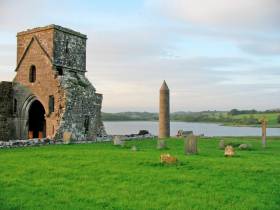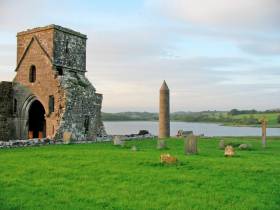Displaying items by tag: Devenish Island
Erne System: Jetty Works at Devenish Island
Waterways Ireland advises masters of vessels on and users of the Erne System in Northern Ireland that piling works have commenced adjacent to the East Jetty at Devenish Island on Lower Lough Erne in Co Fermanagh.
This work is to facilitate an extension of the existing jetty with completion anticipated by end of March. During the extension work, access will be maintained to the existing jetty so far as reasonably practical.
Masters of vessels are advised to adhere to all signage and direction of safety boats, the cross-border body for Ireland’s inland waterways adds.
Erne System: Continuing Site Investigation Works Extend Partial Closure of Devenish Island Jelly
Waterways Ireland advises masters of vessels and users of the Erne System that site investigation works are continuing at the East Jetty on Devenish Island in Co Fermanagh from Monday 17 to this Friday 21 October.
As previously reported on Afloat.ie, part of the public jetty is closed to mooring and a works exclusion zone is in place as of last week. The remainder of the jetty is still in use, the cross-border body for Ireland’s inland waterways adds.
Waterways Ireland advises masters of vessels and users of the Erne System that site investigation works will be taking place at the East Jetty on Devenish Island in Co Fermanagh this coming week from Tuesday 11 to Friday 14 October. Update: works have been extended to Friday 21 October; see HERE.
Part of the public jetty will be closed to mooring and a works exclusion zone will be in place. The remainder of the jetty will be in use, the cross-border body for Ireland’s inland waterways adds.
Murder Charge Over Woman’s Death In Lough Erne This Past April
#LoughErne - BelfastLive reports that a man has been charged with the murder of a woman whose body was found in Lough Erne earlier this year.
Lu Na McKinney was recovered from the water by emergency services in the early hours of Thursday 13 April.
As previously reported on Afloat.ie, the 35-year-old mother of two from Donegal was believed to have slipped from the deck of a boat while checking it was tied to the jetty.
Yesterday a PSNI spokesperson confirmed that a 41-year-old man had been charged with her murder and was due before Omagh Magistrates’ Court this morning (Tuesday 5 December).
The man is also charged with possession of a Class C controlled drug, a classification which includes a number of tranquilisers.
Donegal Woman Drowns In Lough Erne Tragedy
#LoughErne - A Donegal woman drowned after a boating accident on Lough Erne late on Wednesday night, as RTÉ News reports.
The woman is believed to have fallen overboard from a hired vessel she and her husband and children has been using for the Easter holidays.
It’s thought the 35-year-old slipped from the deck while checking the boat was tied to the jetty at Devenish Island, near Enniskillen, in the early hours of Thursday 13 April.
The Belfast Telegraph adds that the woman’s husband dived into the lough to attempt a rescue after hearing a splash but could not find her in the dark.
Her body was recovered by emergency services 40 minutes later just metres from the stern of the boat. CPR was attempted at dockside but she was later died in hospital.
The Belfast Telegraph has more on the story HERE.

























































